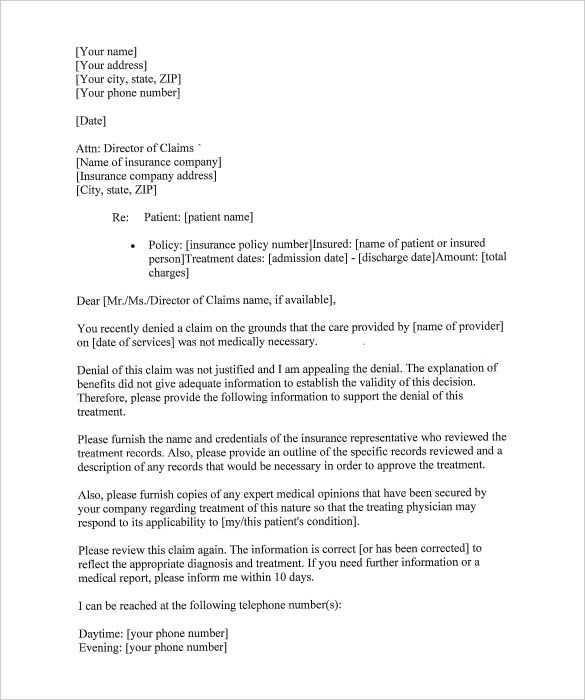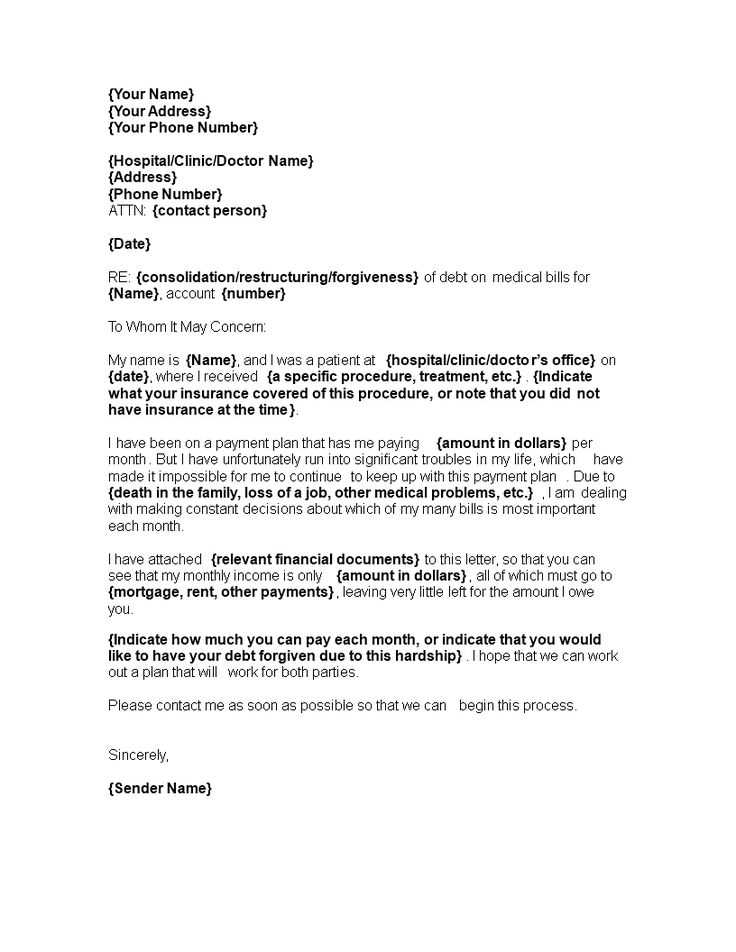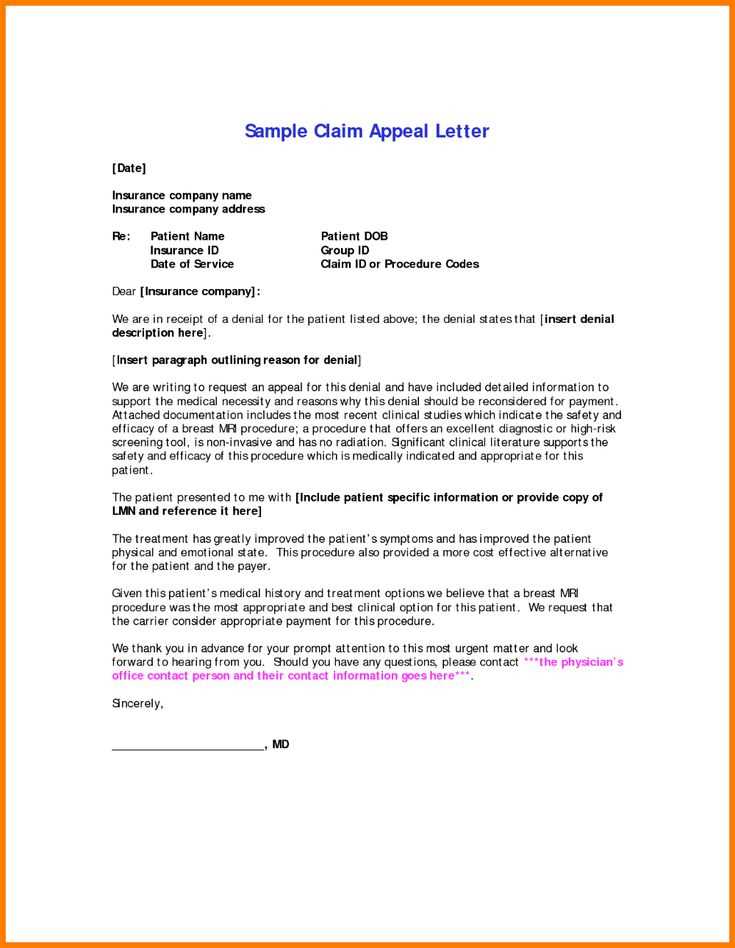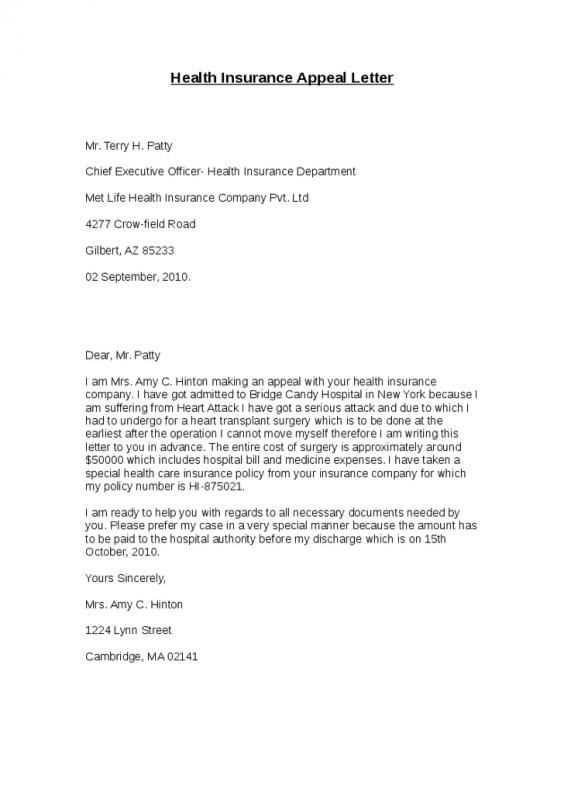Medical necessity letter template

A well-crafted medical necessity letter provides a clear and compelling explanation of why a particular treatment or service is required. It serves as a formal communication between healthcare providers and insurance companies, ensuring that the necessary care is covered. Be specific about the patient’s condition, the recommended treatment, and why it is vital for their health.
Begin by addressing the insurance company or other relevant entity, including the patient’s details, such as their diagnosis and any relevant medical history. Make sure to mention the specific treatment or service being requested and explain why it is the most appropriate option. Highlight any previous treatments or interventions that have not been effective.
Clearly outline the medical facts that justify the necessity of the requested treatment. Use straightforward language and avoid jargon that might confuse the reader. Ensure that the letter is detailed yet concise, demonstrating the critical need for the service. If applicable, include supporting documents, such as test results or expert opinions, to strengthen the case.
End the letter with a polite yet firm statement, reiterating the importance of approving the requested treatment. Indicate your willingness to provide any additional information or clarification as needed.
Here’s the corrected version:
Ensure the letter includes the patient’s full name, date of birth, and insurance information at the top for easy reference. The provider should begin by stating the diagnosis and explaining why the requested treatment is medically necessary, based on the patient’s specific condition. This sets the context for the rest of the letter.
Clarity in Treatment Explanation:
The provider must detail the recommended treatment, procedure, or service, and explicitly link it to the diagnosis. Highlight how the treatment is the most appropriate choice given the patient’s current health status. Avoid vague terms, and provide evidence-based reasons for the recommendation. A clear explanation helps to prevent misinterpretation by insurance reviewers.
Supporting Documentation:
- Attach any relevant test results or medical records that support the need for the proposed treatment.
- Include a statement on the anticipated outcome and how it will improve the patient’s quality of life.
Finally, make sure the provider signs and dates the letter, and includes contact details for follow-up questions. A well-organized and straightforward letter increases the chances of approval.
- How to Structure a Medical Necessity Letter
Begin with the recipient’s name and title, followed by their address. Clearly state your purpose in the opening paragraph–this ensures the reader understands the reason for the letter right away. Specify the patient’s condition and the treatment in question. Be direct and precise with the diagnosis, including any relevant medical codes if needed.
Present Medical Evidence
Support your case with concrete medical evidence. This includes test results, diagnoses, and physician notes that justify the treatment. Be sure to reference specific documents and data that strengthen the claim. Mention how the treatment is crucial for the patient’s well-being, considering their medical history and current condition.
Clarify the Necessity

Describe why the proposed treatment is the only viable option. Highlight any previous treatments and why they were unsuccessful or inadequate. Provide details on the potential benefits of the treatment and how it aligns with established medical guidelines. Ensure the letter explains why no alternative approach would be as effective in this particular case.
Clearly state the patient’s full name, date of birth, and insurance details. This helps ensure the document is correctly attributed and can be processed without delays.
Details of the Medical Condition
Describe the patient’s condition with specifics, including diagnosis and severity. Be clear about how this condition affects the patient’s daily life and ability to function.
Recommended Treatment and Its Necessity
Outline the recommended treatment or service, explaining why it is medically necessary. Provide details on how the treatment is essential for the patient’s health and the risks of not pursuing it.
Include any relevant medical history that supports the necessity of the treatment, such as previous treatments or failed interventions. If applicable, mention any tests or procedures that reinforce the need for the proposed care.
When drafting a medical necessity letter, clarity and professionalism should be prioritized. The tone should be formal, but accessible, ensuring the reader can easily follow the reasoning behind the request. Use straightforward language that outlines the medical condition, treatment plan, and rationale behind the need for specific medical services or equipment.
Maintain Objectivity

Avoid emotional or subjective language. Focus on presenting facts that support the medical need. Statements like “the patient has severe pain” should be backed by medical evidence, such as diagnoses, test results, or physician’s notes. Clear, direct statements demonstrate the seriousness of the situation without relying on hyperbole.
Be Concise and Precise
Minimize unnecessary details that do not contribute directly to the medical necessity. The letter should be structured to highlight key points quickly, such as the patient’s diagnosis, treatment options, and why a specific service is required. Lengthy explanations can detract from the focus of the request.
| Do | Don’t |
|---|---|
| Use clear and direct medical terms | Avoid jargon or overly technical language |
| Reference supporting medical documentation | Make unsupported claims |
| State the medical necessity based on facts | Use emotional language or assumptions |
By following these guidelines, you ensure that the letter is not only professional but also effective in conveying the medical need for services or equipment. This approach increases the chances of a favorable outcome.
One common mistake is failing to clearly state the medical necessity. Be direct and specific about the patient’s condition, why the requested treatment or service is required, and how it will benefit their health. Avoid vague or generalized language that may confuse the reader.
Excessive Medical Jargon

While it’s important to include medical details, overuse of technical terms can make the letter hard to follow. Keep the language clear and concise. Focus on explaining the treatment in terms the reviewer can easily understand, even if they aren’t a medical expert.
Inadequate Supporting Documentation
Without sufficient evidence, the letter can appear less credible. Always include relevant test results, diagnoses, and a clear connection between the condition and the requested treatment. Missing documents or incomplete references can weaken the case.
Another mistake is neglecting to include the patient’s personal situation. Demonstrate how the treatment will improve their quality of life, work, or daily functioning. Address any specific concerns the insurer may have regarding the need for the service.
Finally, ensure the tone is professional and respectful. Avoid using emotional language or making demands. Instead, provide a logical and well-supported argument for why the requested service is medically necessary.
Use a professional tone when addressing insurance providers. Start with the specific name of the insurance company, followed by the department or individual’s title if known. Always address the letter to a particular person if possible, such as a claims representative, to make your communication more direct. If you do not have a contact name, use a general title like “Claims Department” or “Customer Service Department.” Include the correct address details for the provider, ensuring that you direct the letter to the appropriate location for faster processing.
In the opening of the letter, clearly state your purpose for reaching out, referencing the claim number or policy number to help the provider quickly locate your case. This allows for a more streamlined review process. Be concise and direct with the salutation, using titles like “Dear [Claims Adjuster’s Name]” or “To Whom It May Concern” if you lack a specific contact name.
By being precise and organized in your address and opening, you demonstrate professionalism, making it easier for the insurance provider to assist you effectively.
Reach out within 7 to 10 days after sending your medical necessity letter. This timeframe allows recipients to review the letter while still keeping your request fresh in their minds.
Be polite but firm in your follow-up. Start by confirming they received your letter and inquire about the status of your request. If necessary, ask if there are any additional steps or documentation required.
Keep track of all communication. Note down dates, names, and any relevant details during your follow-up calls or emails. This will help maintain a clear record in case further action is needed.
If you don’t receive a timely response, follow up again after another 5 to 7 days. Be persistent but courteous in your approach, showing that you are invested in resolving the matter efficiently.
Consider offering a clear deadline for a response if the matter is urgent. This can help move the process along and make it easier for the recipient to prioritize your request.
Maintain professionalism and stay calm, regardless of the outcome. Consistent, respectful communication will go a long way in ensuring a positive resolution.
To create a clear and convincing medical necessity letter, it is important to follow a structured approach. Make sure the content is direct and specific to the situation at hand.
Key Information to Include
- Patient Information: Provide the patient’s full name, date of birth, and relevant medical history.
- Diagnosis: Clearly state the patient’s diagnosis, with supporting evidence from recent medical records or tests.
- Treatment History: Outline any previous treatments attempted, including their outcomes.
- Recommended Treatment: Specify the treatment or service being requested and why it is necessary for the patient’s condition.
- Medical Justification: Explain how the proposed treatment directly addresses the patient’s needs and improves their health.
Organizing the Letter
- Start with a professional greeting, addressing the letter to the appropriate recipient.
- In the opening, introduce the patient and their diagnosis, followed by a brief explanation of the treatment history.
- Present the recommended treatment in detail, emphasizing its importance based on medical evidence.
- End with a polite but firm conclusion, requesting approval for the recommended treatment.